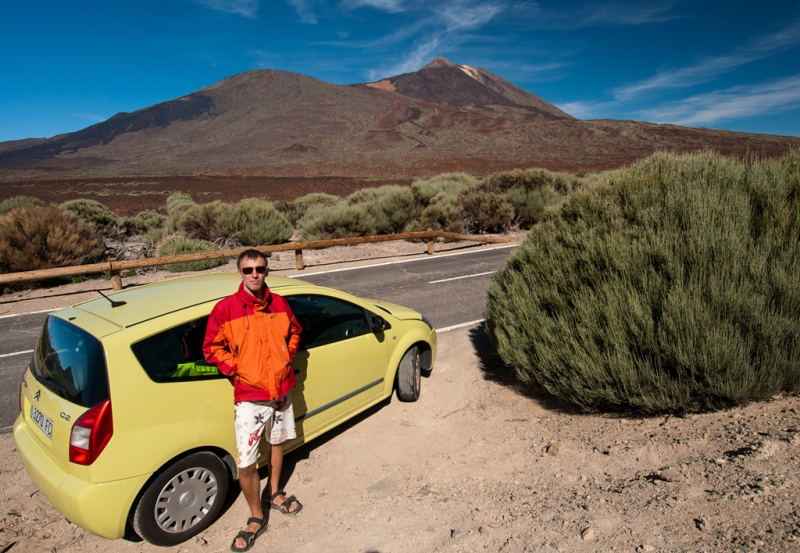
Today I want to share my impressions of the trip to the Canary Islands and our short road trip around Tenerife. We ended up there completely spontaneously – one ordinary gray St. Petersburg day we were sitting at home, it was raining outside the window, and as usual, in such weather, we really wanted summer. The November holidays were approaching (4 days off),
which there was absolutely no desire to carry out in St. Petersburg, and for the first time the idea came to mind to use a service from Yandex, with which you can select a country (and city) based on a given air temperature.
The site listed Morocco, Israel and the Canary Islands among the interesting places we wanted to go. Next, using proven methods of searching for budget flights, we discovered that there were obscenely cheap tickets for the dates we needed to the Canary Islands.
After reading a little about the islands, we learned that Tenerife has excellent beaches and volcanoes, a warm ocean with the Gulf Stream, in which you can swim in both winter and summer (the water temperature is around 20°C all year round) ,
as well as first-class infrastructure with European service.
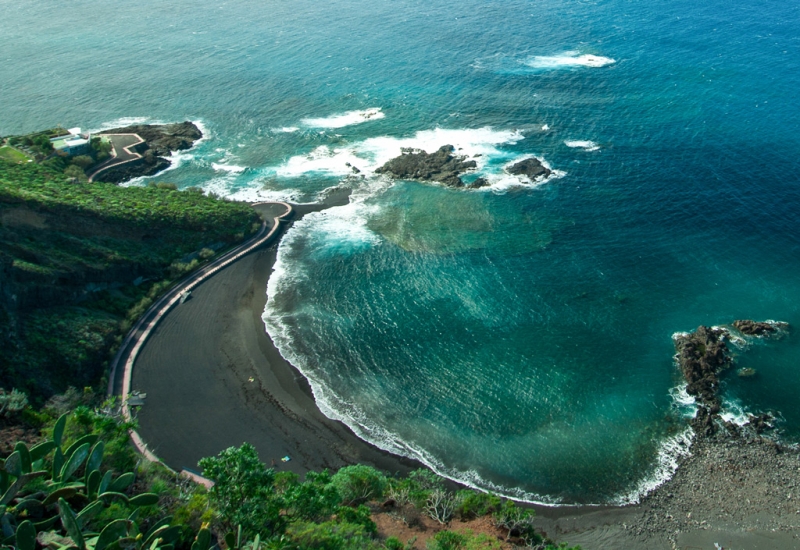
Preparation for this trip turned out to be probably the fastest in the history of our travels. From the moment the idea came to mind until the connections were thought out, all the air tickets were purchased, beaches and hotels were selected, a car was booked and an approximate route was drawn up, no more than 5 hours passed 🙂
When we were preparing for the trip, we learned that a mountain range runs through the entire island of Tenerife, which divides it into 2 completely different zones – the green, forest-covered cool north, and the arid, steppe and sunny south, so we wanted not just settle in one place, but visit different places and travel around the island, based on which we compiled our route.
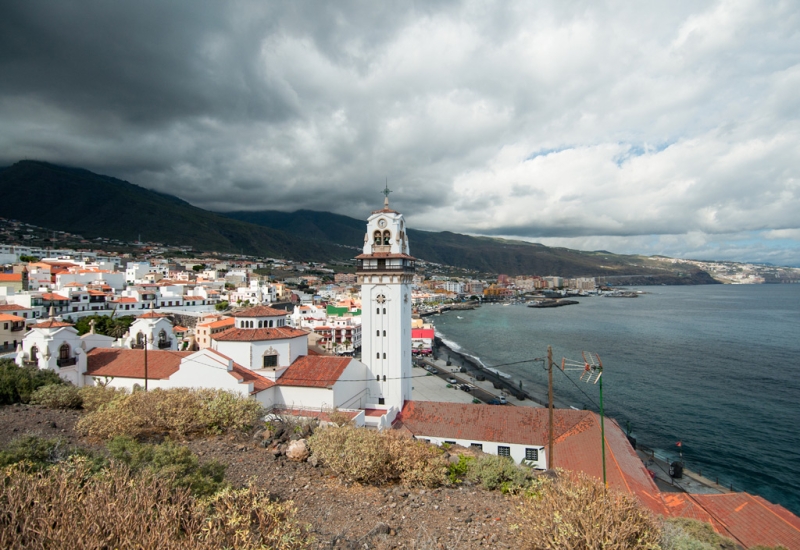
The best ones – clean, wide beaches, with well-developed infrastructure and warm sea, are located in the southwest of the island, therefore, having received a car at the airport that we had booked in St. Petersburg (it cost us €25/day),
we went exactly there.
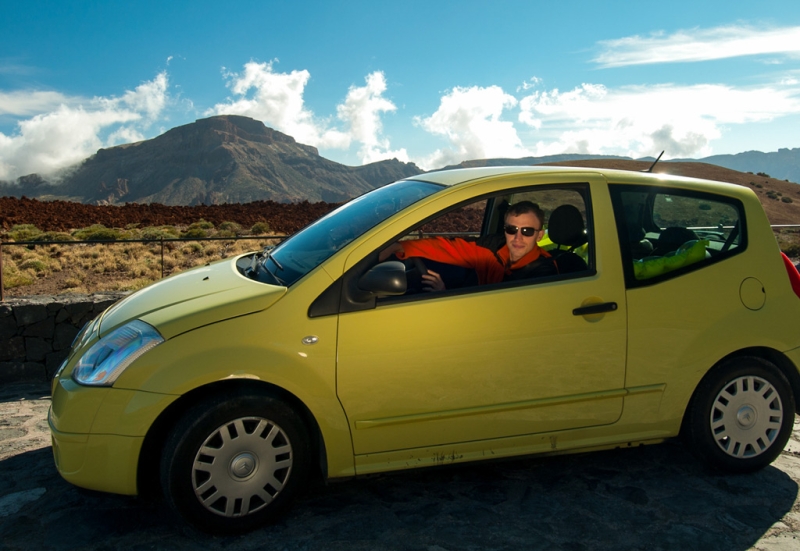
We spent a couple of days in the youthful, noisy and party town of Las Americas,
which smoothly flows into Los Cristianos,
a quieter place – it is a little more expensive, so it is preferred by families on vacation or older people who are indifferent to evening parties.
These two main tourist centers have a huge variety of hotels, cafes and restaurants with traditional Canarian, Spanish and European cuisine to suit every taste and budget.
After Las Americas we headed north, stopping at interesting places along the way. There are many wild beaches with black sand – they are very uncrowded, some are completely deserted, but very beautiful. Many are located at the foot of the cliffs, which makes it almost impossible to get to them without personal transport.
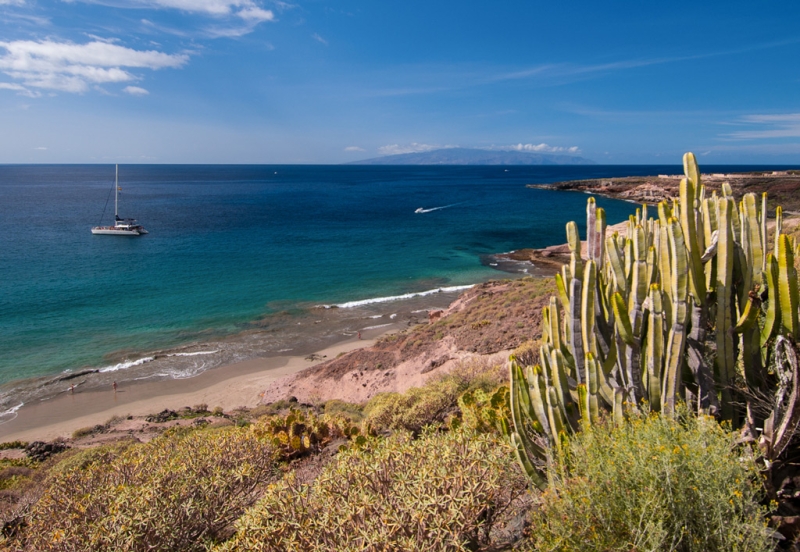
The natural beaches in Tenerife are mainly of volcanic origin, i.e. black, but the growth of tourism has led to the fact that some of them were replaced by artificial ones – white sand for them was raised from the seabed, or brought from the African continent. So all the beaches with very light or light gray (due to a mixture of volcanic and light) sand are of artificial origin, with the exception of the beaches in El Medano, where the sand was blown by the wind from the Sahara Desert.
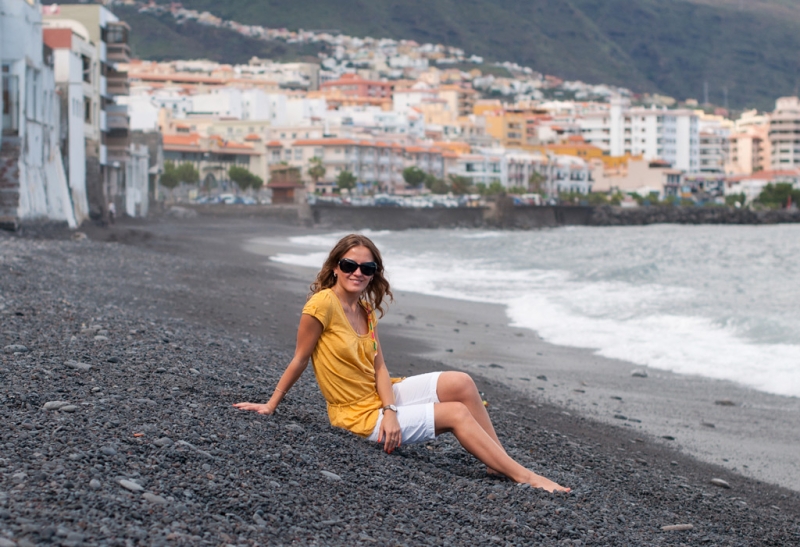
Our main goal in the central part of the island was the Teide volcano, 3718 meters high (the highest point in Spain),
with an amazing landscape park, dilapidated craters and frozen lava flows that form mystical lunar landscapes.
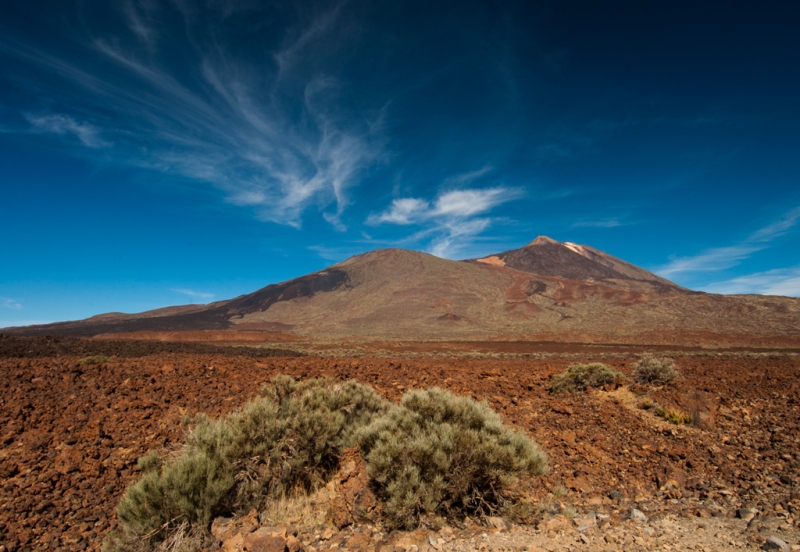
The volcano, together with the area around it, form the Las Cañadas del Teide National Park. Already at the entrance to the park, from the observation platforms, and just from the road, amazing landscapes open up. The landscapes here really resemble unearthly landscapes – either lunar or Martian; by the way, some episodes for Star Wars were filmed here.
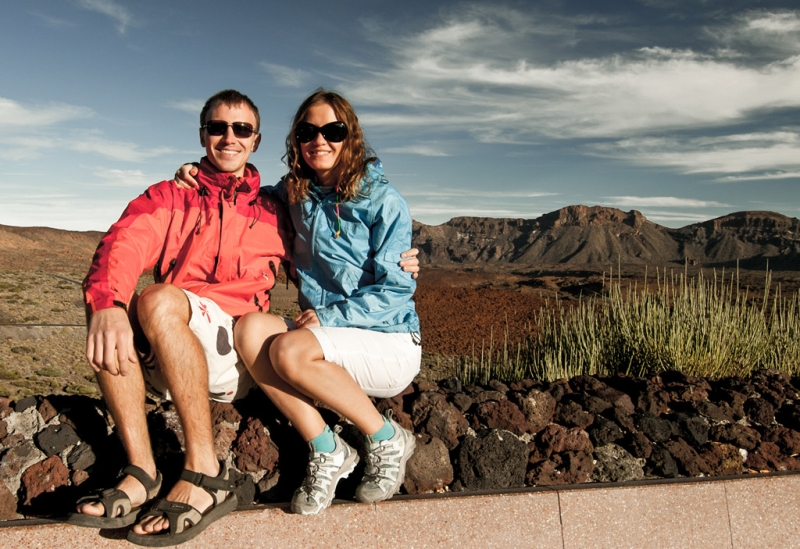
From the foot of the volcano to the top there is a funicular, which in 10 minutes takes you to a height of 3555 meters, where there are 163 meters left to the top of the volcano. Before the construction of the funicular, it took about 30 hours to get to the top.
Here is a rock Los Roques de Garcia (with a small base and a wide top) – the “signature” landscape of Tenerife, images of which are replete with all guidebooks and advertising brochures.
At the top you can walk among the veil of clouds; a walking path leads to an observation deck, from where you can see the island. We spent more than an hour there, the place is very pleasant not only because of the views, but also because of the freshness and coolness.
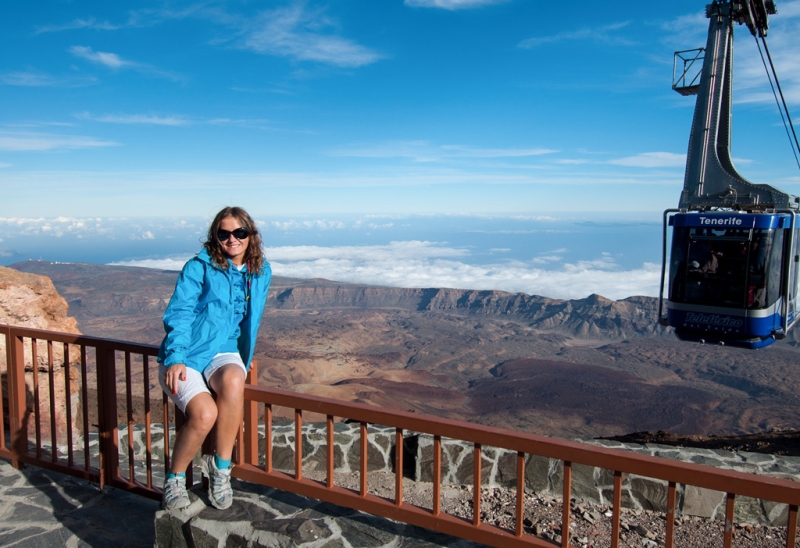
Free access to the very top of the volcano is closed, this is explained by the fact that numerous tourists are gradually dismantling the volcano for souvenirs, which threatens to reduce its height. Of course it sounds strange, so maybe this is not the main reason, or maybe Tenerifeans are afraid that the volcano will lose its status as the highest point in Spain.
To go up to the vent, you need to obtain permission in advance for a specific date. Everything is done quite simply, through a special form on the official website of the park, after which on the appointed day you need to arrive at the park early in the morning, where you will be met by a guide and you will go trekking with him.
It is better to submit an application in advance, since although confirmation comes immediately, there may not be free time in the coming days – visiting the peak is limited to a certain number of people per day, and very often it is completely closed due to weather conditions. We didn’t bother getting a permit in advance; as a result, we were content with an exciting ride up the cable car and an exciting view from the top observation points.
Sometimes, due to bad weather conditions, the volcano and the entire caldera area are completely blocked, so you can’t even get to the base, not to mention the possibility of going up by cable car.
In the rocky areas of Tenerife, including in the Teide landscape park, there are cacti, which, by the way, were once brought from Mexico, and subsequently took root well throughout the island. Agave trees, fig palms and huge rubber trees can also be seen on the island.
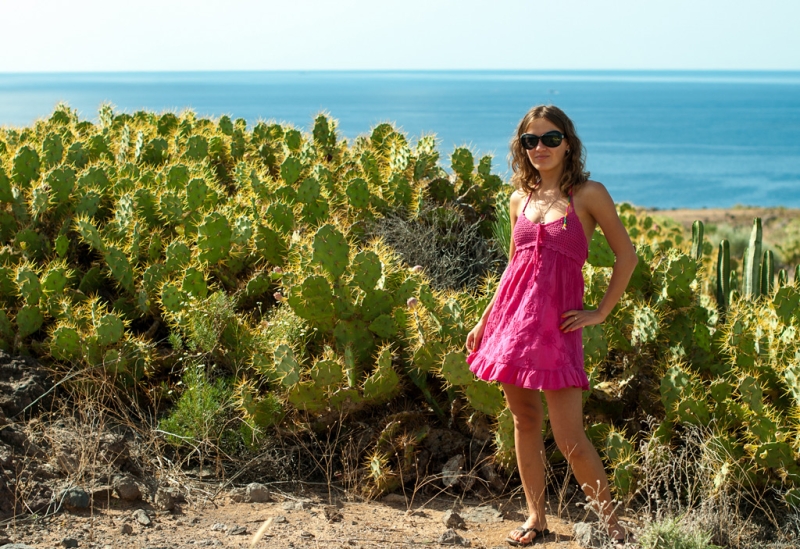
After visiting the volcano, we stopped at Puerto de la Cruz – the largest resort in the north of the island, in the vicinity of which, and in the city itself, there are wonderful black beaches. They say that beaches of volcanic origin are good for health, I want to believe it. At a minimum, they are very beautiful, but in winter, unfortunately, they are not suitable for swimming, the water here is cold, and sometimes the waves are so strong that it becomes dangerous to go into the water.
Moving further to the east, we looked into Santa Cruz – the capital of Tenerife. For tourists, the city is attractive, perhaps, only for its huge shopping malls and the annual large-scale, very colorful carnival in February, but we were in November and at that time, to be honest, it was somewhat dull here.
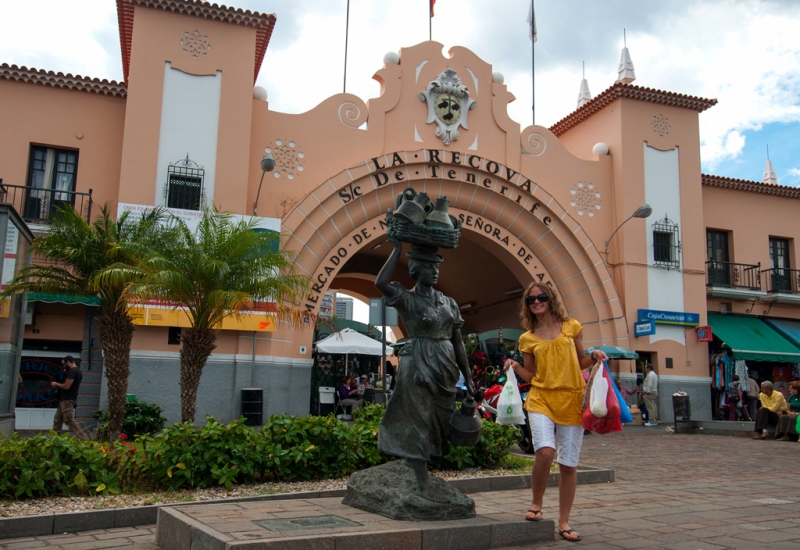
Since we didn’t have a clear route, we just drove along the road, stopped at interesting places, and stopped at beaches that we liked. We really liked El Medano, there are several beaches concentrated here. One is in the city, on the western side of the Montana Roja volcano, this is a rather picturesque place with low red dunes. Mostly windsurfers from all over Europe gather here.
On the opposite side of the mountain is the second beach, La Tejita,
it is quite large, 1.5 kilometers long. Another one is at Mount Montana Pelada,
it’s called La Pelada, quite picturesque, under a rocky cliff, with black volcanic sand. The beach is located in a bay, so there is much less wind here than on La Tejita.
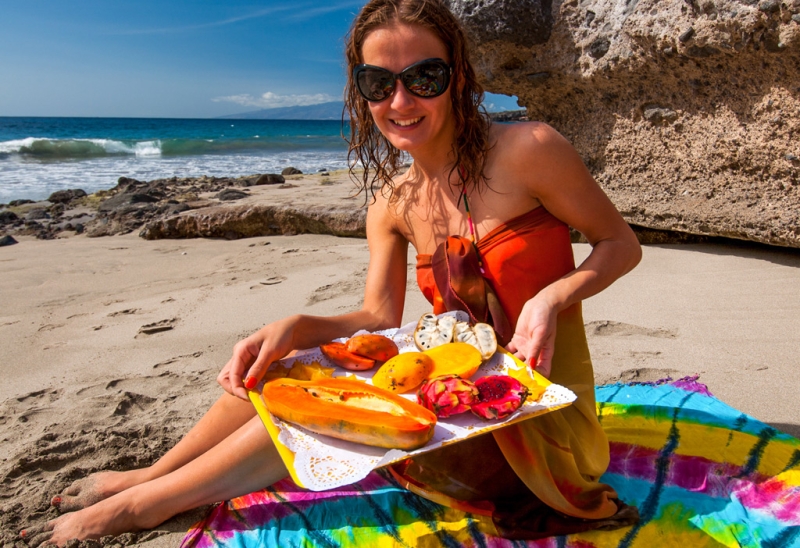
On the southwest coast, next to the fishing port of Puerto de Santiago, we found one of the most beautiful beaches in the south of the island La Arena (Playa de la Arena) — it is a natural beach with black sand in a rocky bay. Spectacular rocks and the ocean will not leave lovers of beach photo shoots indifferent!
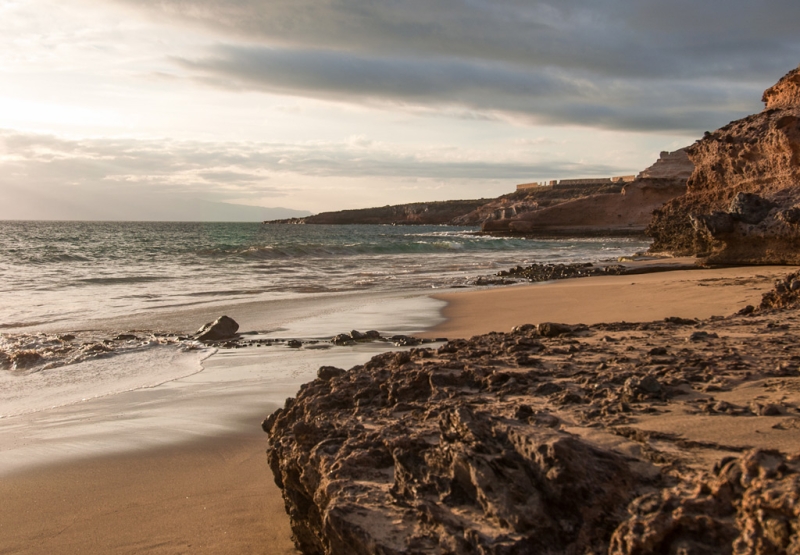
Unfortunately, in 10 days on the island, even with a strong desire, it is impossible to visit all the beaches, however, we did not set ourselves such a task. In most cases, we were in no hurry – sunbathing, swimming, having picnics or watching the sun go down before sunset. But we were only passing through some beaches, literally stopping by for 10-15 minutes, because it was either crowded or the place turned out to be not very picturesque.
We do not rule out that at another time of the year the island would not have made such a pleasant impression, but considering that we escaped gloomy, snowy and rainy St. Petersburg for 10 days into a sunny summer with a warm ocean and beautiful beaches, delicious Spanish cuisine and prices below the mainland, and even with a mega cheap flight, Tenerife left the best memories.

